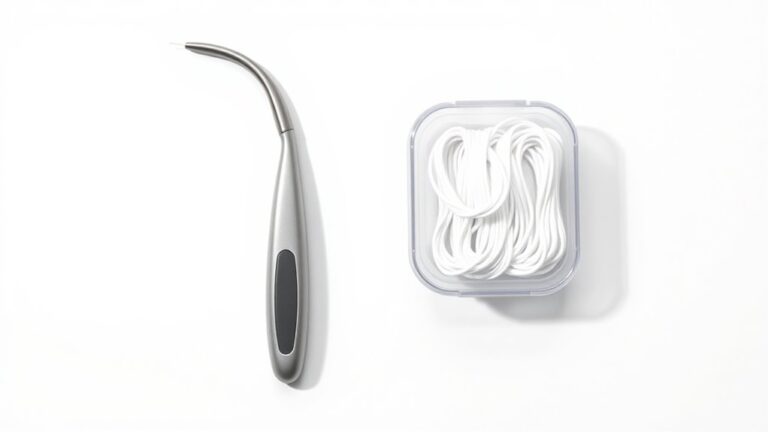Melasma, a skin condition causing dark patches, often appears due to sun exposure, hormones, or genetics. While creams and treatments help, diet plays a key role in managing it. Certain foods can brighten skin and reduce inflammation, while others could trigger pigmentation. Understanding what to eat—and what to skip—might make a difference. The right choices can not cure melasma, but they may support healthier skin and fewer flare-ups. What works best? The answers could surprise you.
Melasma and Its Causes
Melasma is a skin condition that causes brown or grayish patches, usually on the face. These patches appear when skin cells produce too much pigment, often due to hormonal changes like pregnancy, birth control, or menopause.
Sun exposure worsens melasma because UV rays trigger more pigment production. Inflammation from skin conditions or thyroid disorders can also play a role, making skin more prone to discoloration.
While genes influence susceptibility, external factors like certain medications—including antiseizure drugs—may contribute. Preventing flare-ups involves protecting skin from the sun and managing fundamental health issues.
Though harmless, melasma can affect confidence, so comprehension of its causes helps in finding effective solutions. Staying informed allows better skin care choices.
The Role of Diet in Managing Melasma
What you consume can subtly influence your skin’s behavior, especially as you contend with stubborn patches of melasma. While diet alone won’t erase melasma, dietary changes might/can help manage its appearance by addressing oxidative stress and inflammation. Foods high in antioxidants—like berries, spinach, and nuts—protect skin cells from damage linked to hyperpigmentation. Similarly, avoiding sugar and processed foods could/might reduce flare-ups by stabilizing hormones. Balancing gut health with probiotics could/might also play a role in skin clarity.
| Nutrient | Benefit for Melasma | Food Sources |
|---|---|---|
| Vitamin C | Reduces melanin production | Citrus, bell peppers |
| Vitamin E | Protects against free radicals | Almonds, sunflower seeds |
| Zinc | Supports skin repair | Pumpkin seeds, lentils |
Small shifts in diet and melasma management could/might yield noticeable results over time.
Anti-Inflammatory Foods to Incorporate
Many small dietary tweaks can work quietly to support healthier skin, especially for managing melasma. Anti-inflammatory foods help reduce skin inflammation, a key factor in melasma flare-ups. These foods soothe internal triggers that might worsen pigmentation.
Fatty fish (salmon, mackerel): Packed with omega-3s, they fight inflammation and could calm skin sensitivity.
Leafy greens (spinach, kale): Rich in antioxidants, they help combat oxidative stress linked to melasma.
Turmeric & ginger: These spices block inflammatory pathways, potentially lessening pigment production.
Berries, nuts, and green tea also add anti-inflammatory benefits to the diet. Eating these regularly creates a protective buffer against melasma triggers while keeping skin calm. The approach isn’t about quick fixes but steady, gentle nourishment. Small, consistent choices can make a noticeable difference over time.
Top Foods Rich in Skin-Brightening Nutrients
While anti-inflammatory foods help calm skin from the inside, certain nutrients go a step further by actively brightening uneven pigmentation. Vitamin C-rich foods like citrus fruits, bell peppers, and broccoli inhibit melanin production, reducing dark spots. Vitamin E sources such as almonds and avocados protect skin with antioxidants, fighting oxidative stress that worsens melasma.
Niacinamide (vitamin B3) in mushrooms and tuna helps block pigment formation, while zinc in pumpkin seeds regulates melanin synthesis. Berries and leafy greens, packed with antioxidants, shield skin from free radical damage. Fatty fish like salmon provide omega-3s, supporting skin repair. Including these nutrient-dense foods can gradually improve skin tone by addressing pigmentation at its root, offering a natural way to combat melasma.
Copper-Containing Foods to Limit or Avoid
Melasma can be worsened by excessive copper intake, which influences melanin production. Foods like shellfish, nuts, and seeds contain higher copper levels and ought to be monitored for those managing melasma.
Dark chocolate, another copper-rich source, can be enjoyed but should be consumed in moderation to avoid potential skin concerns.
Shellfish and Copper
Because copper plays a role in melanin production, limiting high-copper foods like shellfish can help manage melasma flare-ups. Shellfish, including shrimp, crab, and oysters, contain significant amounts of copper, which can exacerbate skin discoloration in those prone to melasma. While these foods offer nutritional benefits, their copper content can disrupt melanin regulation, leading to darker patches.
Excess copper might overstimulate melanin production, worsening melasma.
Reducing shellfish intake, rather than eliminating it entirely, can balance copper levels.
Lean proteins like chicken or plant-based options provide nutrition without excess copper.
For those with melasma, monitoring shellfish consumption alongside other copper-rich foods could help maintain clearer skin. Consulting a dermatologist can provide personalized guidance on dietary adjustments.
Nuts, Seeds Risks
Nuts and seeds are often praised for their health benefits, but for those grappling with melasma, they can pose a problem. These foods are high in copper, a mineral that can disrupt melanin production and worsen skin discoloration.
While nuts and seeds offer nutrients like healthy fats and protein, their copper content might trigger or aggravate melasma in sensitive individuals. Almonds, cashews, sunflower seeds, and sesame seeds are particularly rich in copper. Limiting these foods could help manage melasma by balancing copper levels. However, completely cutting them out isn’t necessary—moderation is key.
Consulting a dermatologist can provide personalized advice on dietary adjustments. For those with melasma, being mindful of copper-rich nuts and seeds may lead to clearer, more even-toned skin over time.
Chocolate Moderation Tips
While many enjoy chocolate for its rich taste and mood-boosting effects, those managing melasma could need to watch their intake. Chocolate, especially dark varieties, contains copper, which might disrupt melanin production and worsen melasma. Moderation and mindful choices can help balance enjoyment with skin health.
- Restrict dark chocolate to a few ounces per week, as it’s higher in copper.
- Select lower-copper alternatives like milk or white chocolate if cravings strike.
- Combine chocolate with antioxidant-rich foods like berries to help mitigate potential effects.
Being aware of copper in other foods, such as nuts or shellfish, is also crucial. Minor adjustments can make a difference without sacrificing indulgence. For those with melasma, balancing treats with skin-friendly habits guarantees both satisfaction and clarity.
High-Glycemic Index Foods That May Worsen Melasma
Why High-Glycemic Foods Matter
Melasma isn’t just about sun exposure—your plate plays a role too. Foods that send blood sugar soaring, like sugary cereals or white rice, create a chain reaction. Insulin spikes can stimulate excess melanin production, darkening patches.
The Usual Suspects
- Sugary Processed Snacks: Cookies, candy, and soda flood the body with quick-digesting sugars.
- White Bread & Pasta: Refined grains lack fiber, causing rapid glucose spikes.
- Potato Chips: High starch content makes them a double threat—fried *and* high-glycemic.
- Sweetened Breakfast Cereals: Often marketed as healthy but packed with concealed sugars.
- Instant foods: Microwaved meals or flavored oatmeal often contain added sweeteners.
How to Swap Smartly
- Choose whole grains: Brown rice or quinoa digest slowly, preventing insulin surges.
- Snack on nuts or berries: They satisfy cravings without the sugar crash.
- Read labels: Words like “syrup” or “dextrose” signal concealed high-GI ingredients.
Small shifts add up. Your skin might thank you.
The Hormone Link
Insulin isn’t the only culprit—high-glycemic diets can indirectly raise cortisol and estrogen, both tied to melasma. Balancing meals with protein (like eggs or lentils) and healthy fats (avocados, olive oil) helps keep hormones steadier.
A Practical Approach
You don’t need to ban treats entirely. Pairing a square of dark chocolate with almonds lessens the glycemic load. It’s about consistency, not perfection.
Transitioning to the next section on proactive diet choices, consider how combining low-GI foods with hydration amplifies their benefits.
Sugary Processed Snacks
That afternoon candy bar or bag of chips can feel satisfying, but it could be quietly aggravating melasma. Sugary processed snacks like cookies, sodas, and pastries are packed with refined carbs that spike blood sugar levels, potentially triggering inflammation and hormonal shifts linked to darker skin patches. These processed foods lack nutrients while flooding the body with fast-digesting sugars, creating a domino effect that might worsen pigmentation issues.
- Blood Sugar Spikes: Rapid rises in glucose can increase insulin, which could stimulate melanin production.
- Inflammation Trigger: Added sugars promote oxidative stress, potentially intensifying melasma.
- Nutrient Deficiency: Processed snacks displace whole foods that could otherwise support skin health.
Swapping these for low-glycemic alternatives like nuts or fruit can help stabilize blood sugar and reduce flare-ups.
White Bread Risks
White bread could seem harmless, but its high glycemic index might be quietly making melasma worse. As a refined carbohydrate, it breaks down quickly, spiking blood sugar and insulin levels. This surge can trigger hormonal imbalances and inflammation, both linked to increased melanin production—melasma’s main culprit.
Studies suggest diets heavy in refined grains like white bread correlate with worse skin pigmentation issues. Swapping it for whole-grain alternatives with fiber helps stabilize blood sugar, reducing flare-ups. Other high-glycemic culprits include pastries and sugary cereals, which similarly disrupt skin health.
Cutting back on these while choosing slow-digesting carbs—like quinoa or sweet potatoes—can support clearer, more even skin. Small dietary tweaks, like opting for sourdough over white bread, could ease melasma over time.
How Sugary Foods Affect Skin Pigmentation
Frequently, sugary foods do more than just satisfy a sweet craving—they can also impact skin pigmentation. High sugar intake disrupts hormonal balance, increasing insulin levels that can overstimulate melanocytes, worsening melasma.
The rapid blood sugar spikes from sweets also trigger inflammation, further aggravating uneven skin tone.
- Insulin Surge: Excess sugar causes insulin spikes, which can boost melanin production, darkening patches.
- Hormonal Chaos: Sugar disrupts estrogen and other hormones linked to melanin regulation, intensifying pigmentation.
- Inflammation Link: Sugary diets promote inflammation, a known contributor to skin discoloration and sensitivity.
Reducing sugary treats like soda or pastries and opting for low-glycemic alternatives (berries, nuts) helps stabilize blood sugar and supports clearer skin. While cravings transpire, mindful substitutions can ease melasma’s visible effects over time.
Dairy and Soy Products: Potential Triggers for Melasma
Beyond sugary foods, dairy and soy products could also play a role in melasma. Dairy, especially skim milk, can increase melanin production, while soy-based foods might disrupt hormones, worsening skin pigmentation. Though more research is needed, limiting these foods could help manage melasma.
| Food Group | Potential Impact on Melasma |
|---|---|
| Dairy | Can boost melanin production |
| Soy | Can disrupt hormonal balance |
| Both | Possible triggers for flare-ups |
The relationship between dairy, soy, and melasma isn’t fully clear, but avoiding them may be worth trying for those struggling with stubborn patches. Opting for alternatives like almond milk or reducing soy intake could help some individuals see improvements. Always consult a professional for personalized advice.
Hydration and Its Impact on Skin Health
Hydration plays an essential role in maintaining skin health and equilibrium, particularly for those grappling with melasma. Proper hydration helps regulate melanin production, preventing worsening pigmentation while keeping skin plump and resilient. Without enough water, skin becomes dry, dull, and prone to irritation—factors that can intensify melasma.
Daily Water Intake: Aim for at least 8 glasses daily to support skin moisture and cell function.
Water-Rich Foods: Cucumbers, watermelon, and citrus fruits complement hydration, delivering nutrients that promote skin health.
Avoid Diuretics: Alcohol and caffeine can dehydrate, disrupting the skin’s balance and worsening melasma.
Staying hydrated isn’t just about drinking water—it’s an inclusive approach. Pairing fluids with water-rich foods guarantees deeper hydration, while limiting dehydrating choices helps maintain clarity. For melasma-prone skin, this equilibrium is key to reducing flare-ups and enhancing radiance.
Conclusion
While diet alone won’t erase melasma, it can be a powerful ally—like sunscreen for your insides. Eating antioxidant-rich foods and avoiding triggers can help calm inflammation and brighten skin over time. Staying hydrated and mindful of copper-heavy or sugary foods keeps hormones balanced. Healthy eating doesn’t guarantee perfection, but it does give skin a fighting chance against stubborn pigmentation, one nourishing bite at a time.





